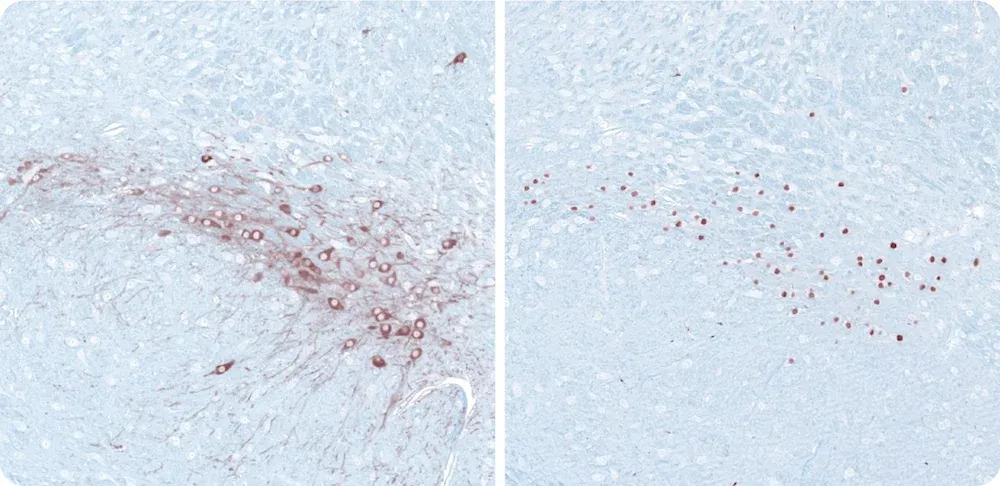
Immunohistochemistry (IHC)
Immunohistochemistry (IHC) serves as a pivotal technique in preclinical research in CNS diseases, providing invaluable insights into the localization, distribution, and expression of specific proteins within the tissue. This method utilizes antibodies tagged with reporters to selectively bind to target proteins, enabling their visualization and quantification.
In studies investigating neurodegenerative disorders, IHC aids in identifying key biomarkers, detecting aberrant protein expression, and elucidating signaling pathways or cellular mechanisms underlying these conditions.

At Biospective, our lab is equipped with multiple IHC autostainers to ensure high efficiency, reproducibility, and throughput.
We have well-established markers for our CNS disease rodent models. We also have a dedicated R&D team that consists of scientists and technicians who are experts in developing optimized IHC staining protocols.
Learn more about our Immunohistochemistry (IHC) Services.